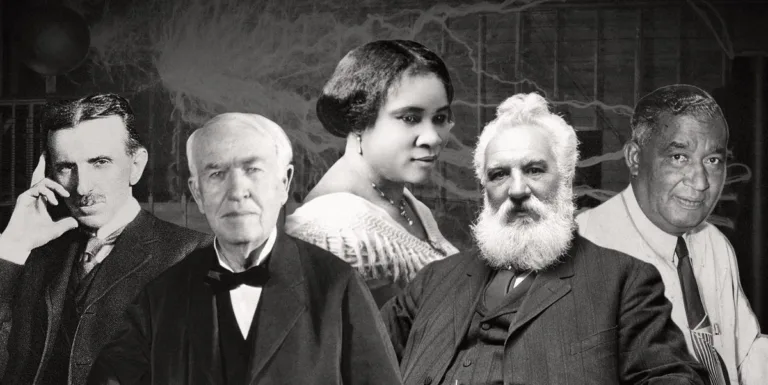The Blackberry smartphone once held a powerful position in the world of Mobile Technology. It was a device synonymous with status and productivity, Especially Among Business Professionals. Its sleek design, Intuitive Interface, and reliable email capabilities made it the go-to choice for many. The story of Blackberry is a fascinating one, marked by both incredible success and a dramatic downfall.
At its peak in the mid-2000s, Blackberry dominated the smartphone market. Co-CEOs Mike Lazaridis and Jim Balsillie led Research In Motion (Rim) to unprecedented heights with their innovative devices. Blackberry’s physical keyboard and secure messaging system made it a favorite among executives and government officials. However, the company’s reign was not destined to last forever.
The arrival of Apple’s Iphone in 2007 and the subsequent rise of Android phones shook the industry to its core. These new devices offered touchscreens, App Stores, and a more user-friendly experience that quickly captivated consumers. Blackberry struggled to adapt to this Rapidly Changing Landscape.
The Rise of BlackBerry
The seeds of Blackberry’s success were sown in the early 1990s when Lazaridis and Balsillie, two Canadian entrepreneurs, founded Research In Motion (Rim). They envisioned a device that would Revolutionize Communication, particularly for business professionals who needed secure and reliable email access on the go. Their vision took shape with the launch of the first Blackberry smartphone in 1999.
The initial Blackberry models were primarily targeted at businesses and government agencies. Their focus on security, reliability, and a dedicated physical keyboard resonated with users who valued these features Above All Else. The iconic Blackberry email experience became synonymous with productivity and professionalism. As word spread about the device’s capabilities, Demand Surged Rapidly.
 Mark Antony and Cleopatra: A Love Story Of Tragedy & Power
Mark Antony and Cleopatra: A Love Story Of Tragedy & PowerBy the mid-2000s, Blackberry had become a global phenomenon. Its sleek design, Intuitive Interface, and strong brand identity made it a highly sought-After Device. The story of Blackberry was one of rapid growth and innovation, capturing the imagination of consumers worldwide.
Innovation and Market Dominance
At the height of its success, Blackberry wasn’T Just About Email Anymore. The company continued to innovate, expanding its product line to include Multimedia Capabilities, GPS navigation, and even early versions of App stores. They introduced new models with enhanced features and designs, constantly pushing the boundaries of what a smartphone could be.
Blackberry’s dominance was undeniable. Its market share soared as millions of users embraced the familiar feel and reliable performance of their devices. The company became synonymous with productivity and connectivity, shaping how people communicated and accessed information on the go. Their secure messaging system also proved invaluable for businesses and governments worldwide.
Blackberry’S Success wasn’t solely due to technological advancements. They cultivated a strong brand identity that resonated with consumers. Their marketing campaigns emphasized the device’s professionalism and sophistication, appealing to a target audience seeking status and efficiency.
The Fall: Missed Opportunities and Competition
However, the winds of change were blowing, and Blackberry’s dominance wouldn’T Last Forever. The arrival of Apple’s Iphone in 2007 marked a turning point in the industry. The Iphone’s Intuitive Touchscreen Interface, Sleek Design, and vibrant app ecosystem captivated consumers worldwide, offering a user experience that Blackberry Struggled To Match.
Rim initially dismissed the Iphone as a niche product, failing to recognize its potential impact on the market. They clung to their existing model of physical keyboards and secure messaging, hesitant to embrace the touch-based revolution sweeping the industry. This reluctance to adapt proved costly. While Blackberry continued to release new devices, they couldn’t keep pace with the rapid Innovation Happening Elsewhere.
The Android operating system, open-source and customizable, further challenged Blackberry’s position. Manufacturers embraced Android, offering a wide range of affordable and feature-rich smartphones that appealed to a Broader Audience. Consumers increasingly turned away from Blackberry, seeking the versatility and app selection offered by these new competitors. The story of Blackberry took a dramatic turn as their market share plummeted, leaving them struggling to survive in an evolving landscape.
Legacy And Lessons Learned
Despite its dramatic fall from grace, Blackberry’s legacy is complex and multifaceted. The company left an undeniable mark on the tech industry, pioneering secure messaging and shaping how people communicated in the early 2000s. Their innovative devices became cultural icons, representing a bygone era of mobile technology.
The story of Blackberry serves as a cautionary tale about the importance of adaptation and innovation. While they initially dominated the market, their failure to keep pace with changing consumer demands ultimately led to Their Downfall. It highlights the need for companies to constantly evolve and embrace new technologies to remain competitive in a Rapidly Evolving Landscape.
Blackberry’s story is a reminder that even industry leaders can face unexpected challenges and setbacks. However, it also demonstrates the resilience of innovation and the enduring impact that groundbreaking ideas can have on the world.
Blackberry’s Enduring Influence
Although Blackberry’s reign as a smartphone giant ended, its influence on the tech world persists. The company’s focus on security and reliability paved the way for future innovations in Mobile Communication. Their early adoption of features like push email and instant messaging laid the groundwork for today’s Ubiquitous Connected Devices.
Even though Blackberry smartphones are no Longer Widely Used, their legacy lives on in the form of software solutions for enterprise customers. The company continues to develop secure messaging platforms and endpoint management tools, catering to businesses that prioritize data protection and compliance.
Blackberry’s story reminds us that innovation is a continuous process, and even seemingly dominant companies can Face Unexpected Challenges. However, its enduring influence highlights the lasting impact of groundbreaking ideas and the importance of adapting to changing technological landscapes.










